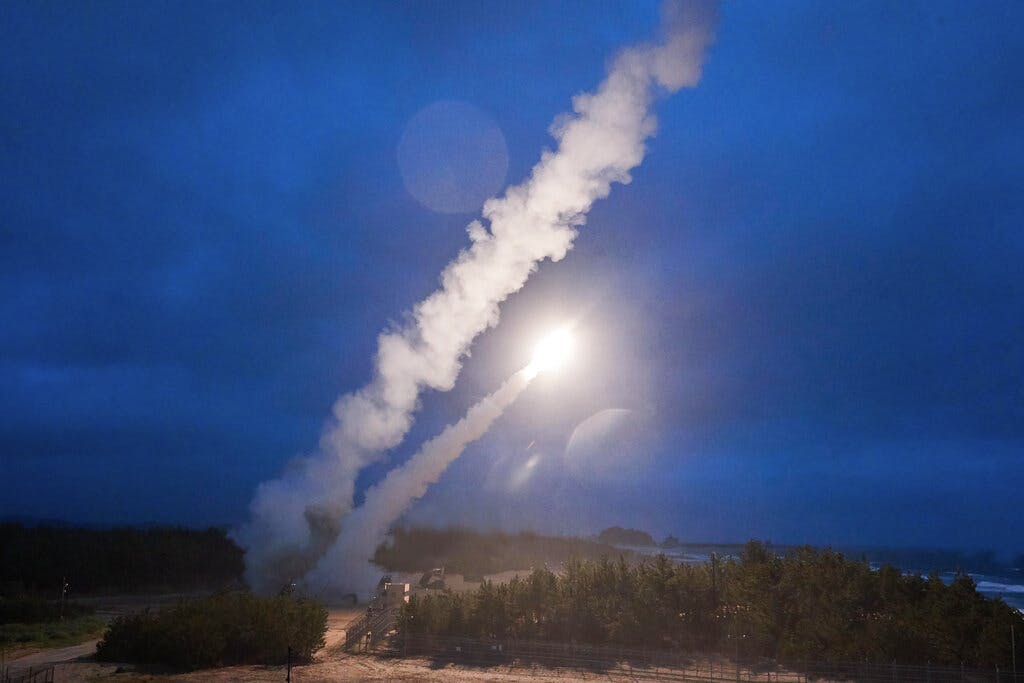South Korea Focuses on Homegrown Technology To Gain Edge in Missile Race
A successful launch would mark a milestone in the ability of South Korean scientists and engineers to develop a missile program free of American or other foreign assistance.

SEOUL — South Korea is bidding to take a significant step beyond the North’s vaunted missile program with a 200-ton rocket that is poised for launch Tuesday.
The Korea Aerospace Research Institute gave the go-ahead to fire the rocket after a launch was canceled last week due to “a technical glitch in the oxidizer tank sensor,” according to Yonhap, the South Korean news agency.
Named Nuri, or “world,” the rocket consists of three stages, the last of which is meant to put a dummy satellite into orbit. During an initial attempt in October, the third stage fizzled after soaring 435 miles into the atmosphere.
A successful launch would mark a milestone in the ability of South Korean scientists and engineers to develop a missile program free of American or other foreign assistance. Although a dummy satellite serves no immediate military purpose, the launch would demonstrate the South’s ability eventually to fire intercontinental ballistic missiles of the sort the North last tested in May.
“Nuri is independently developed with South Korea’s indigenous rocket technologies, from designing and manufacturing to testing and launching, a significant leap forward for a country that has so far relied heavily on foreign resources for space launch vehicle development,” Yonhap said.
The launch from the Naro Space Center 300 miles south of Seoul, if successful, would make South Korea the seventh country to put a satellite weighing more than a ton into orbit. The others are America, Russia, China, France, India, and Japan.
The South Koreans did not publicly compare their program with that of North Korea, but the launch should place the South ahead of the North in missile technology for military as well as other purposes. The North has been testing short- and mid-range missiles all year; the South has developed missiles capable of reaching targets anywhere in the North.
That South Korean scientists and engineers are capable of operating on their own, free of direct input from abroad, contrasts with North Korea’s reliance on foreign support. North Korea for years has been exchanging technology with Iran, which has had observers on the scene witnessing North Korean launches.
The Daily NK, a South Korean website that reports on happenings inside North Korea, said the North Korean leader, Kim Jong-un, after visiting a satellite launch site in March, called for putting military reconnaissance satellites into orbit “so as to possess the strong capability for gathering intelligence by satellites.”
The North’s National Aerospace Development Administration, the Daily NK said, “has reportedly been expanded into a ‘Satellite Research Center.’” North Korean claims of launching satellites are said to be linked to its development of long-range missiles capable of carrying nuclear warheads.
Even as South Korea awaits the launch of the Nuri, China announced that it had tested a missile capable of shooting down enemy rockets.
The Chinese counter-missile test was seen as a response to the “terminal high-altitude area defense program.” The American military, which has placed THAAD missiles on a former golf course about 200 miles south of Seoul, insists the missiles are intended only as defense options against North Korea, but the Chinese have long denounced their installation in South Korea as hostile to China.
An English language Chinese newspaper, the Global Times, left no doubt as to why the Chinese attached such importance to the ability of its counter-missiles to knock out incoming missiles.
The paper charged America with “attempts to blackmail China with modern, nuclear-armed intercontinental ballistic missiles and deploying intermediate-range ballistic missiles in the Asia-Pacific region on the doorsteps of China.” The test on Sunday, the paper said, was “a crucial part of the country’s national defense development that is defensive in nature.”

